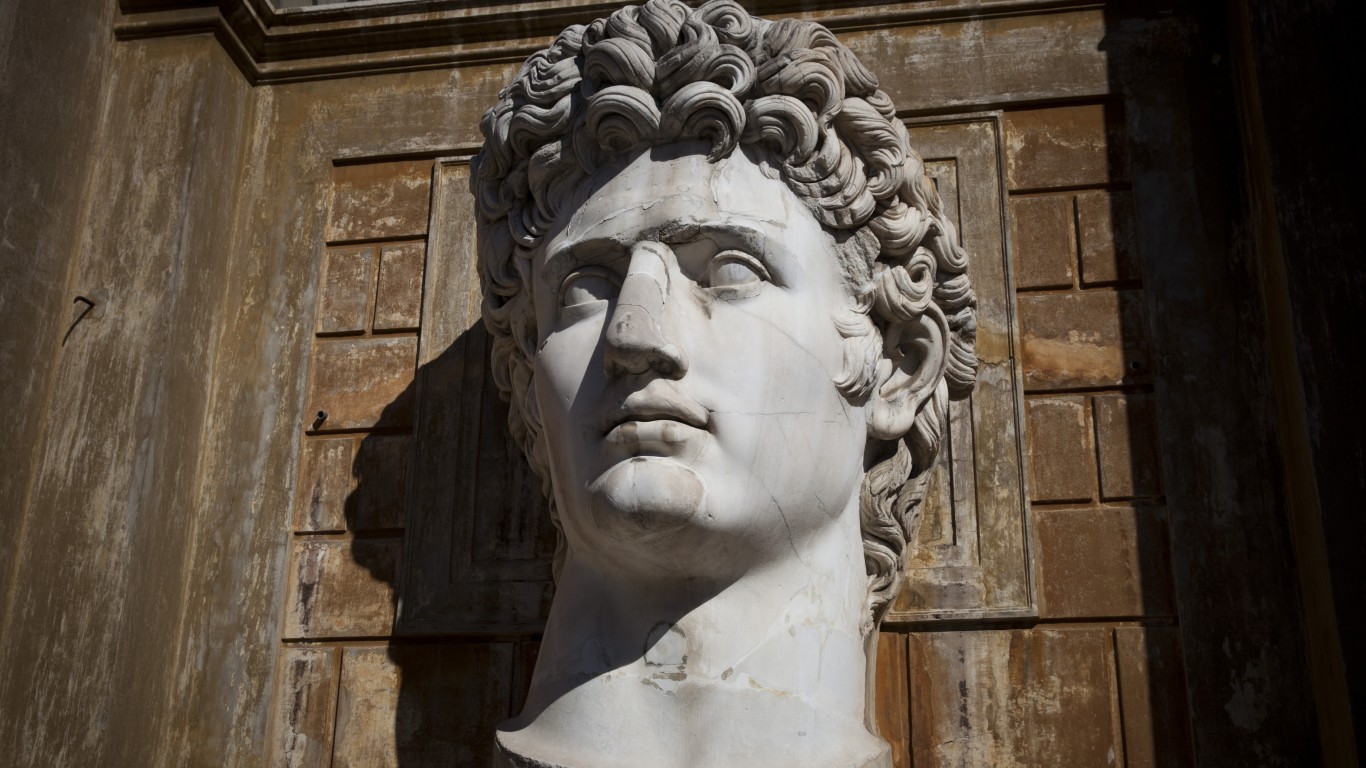
This post may contain links from our sponsors and affiliates, and Flywheel Publishing may receive
compensation for actions taken through them.
compensation for actions taken through them.
Famously, Jesus Christ is known for calling on the rich and poor alike to give their possessions to the poor. He even said, “It is easier for a camel to travel through the eye of a needle than a rich man to go to heaven.” Despite this zoologically friendly yet cryptic warning, the largest Christian church, The Catholic Church, has been amassing billions of dollars worth of financial investments, art, historical artifacts, real estate, antiques, and money. Some of these treasures are over 2,000 years old, and the Vatican has held them for five centuries.
Key Points:
- The Vatican City holds uncountable amounts of books and treasures that it refuses to let the world see.
- Most of the historicity and information about these treasures we have to rely on the Vatican to provide.
- Also: Take this quiz to see if you’re on track to retire (Sponsored)
The vastness of the Vatican Library really can’t be overstated. Besides over two million printed books in every language from every continent, an additional eighty thousand written manuscripts are housed on so many shelves that if placed side by side, would be over 53 miles long. The only person on earth who can check out a book from this vast center of information is the Pope. Besides the Library, there are vaults full of other artifacts, and a museum.
So, if it is as essential as Jesus says to rid yourself of wealth, why haven’t the leaders of his highest percentage of followers done that? In 2015, Pope Francis revealed in an interview that he won’t sell the “riches of the Church,” even though he has strong concern for the impoverished and starving of the world. He reasoned that the treasures actually belong to all of humanity, and despite the appearance of the Church being very rich, it only appears to be that way.
Despite Pope Francis’ claim that the Catholic Church isn’t rich, the Vatican Bank, the Institute for the Works of Religion, manages billions of dollars in assets, equity, and gold reserves. Historically, this bank has acquired a long list of scandals including money laundering for former Nazis, the Mafia, and bankrolling predatory priests.
He continued to say that he does auction off personal gifts that he receives such as cars, motorcycles, and other luxuries. The proceeds of those items are used to help the poor. He reasoned that the Church’s real estate is used to “maintain the structures of the Church and to maintain the many works the Church does in needy countries: hospitals and schools.”
#1 Papal Tiara
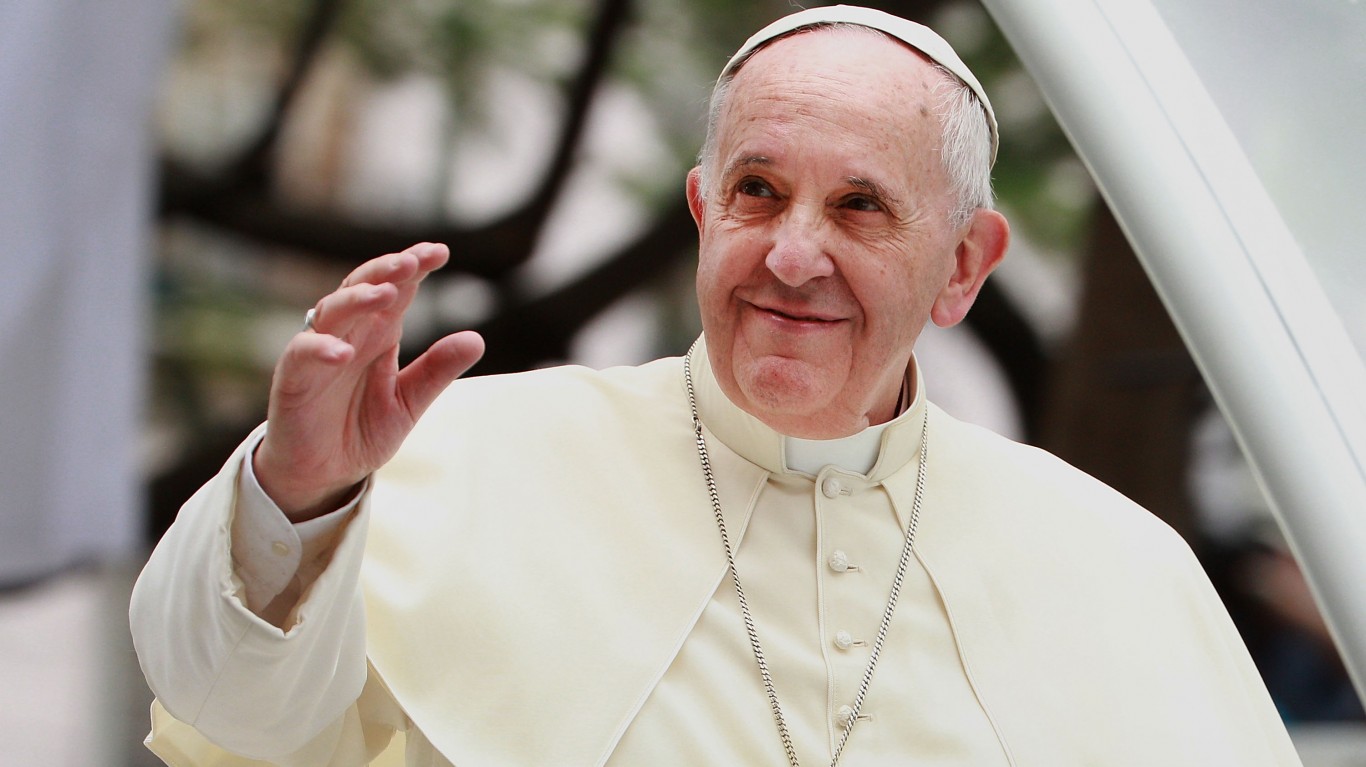
- Date: 8th Century
The most valuable item held within the Vatican’s horde is considered to be Christianity’s crown jewel, The Papal Tiara. It is made of solid gold, various diamonds, rubies, emeralds, and sapphires, and elements of the Tiara date back to the 8th century. Through various restoration efforts since the time of its conception, it has been changed several times. It weighs approximately 5 kilograms (11 lbs.). This crown is meant to signify the Pope’s authority and temporal power. It can only be worn by the sitting pope.
#2 Porphyry Basin
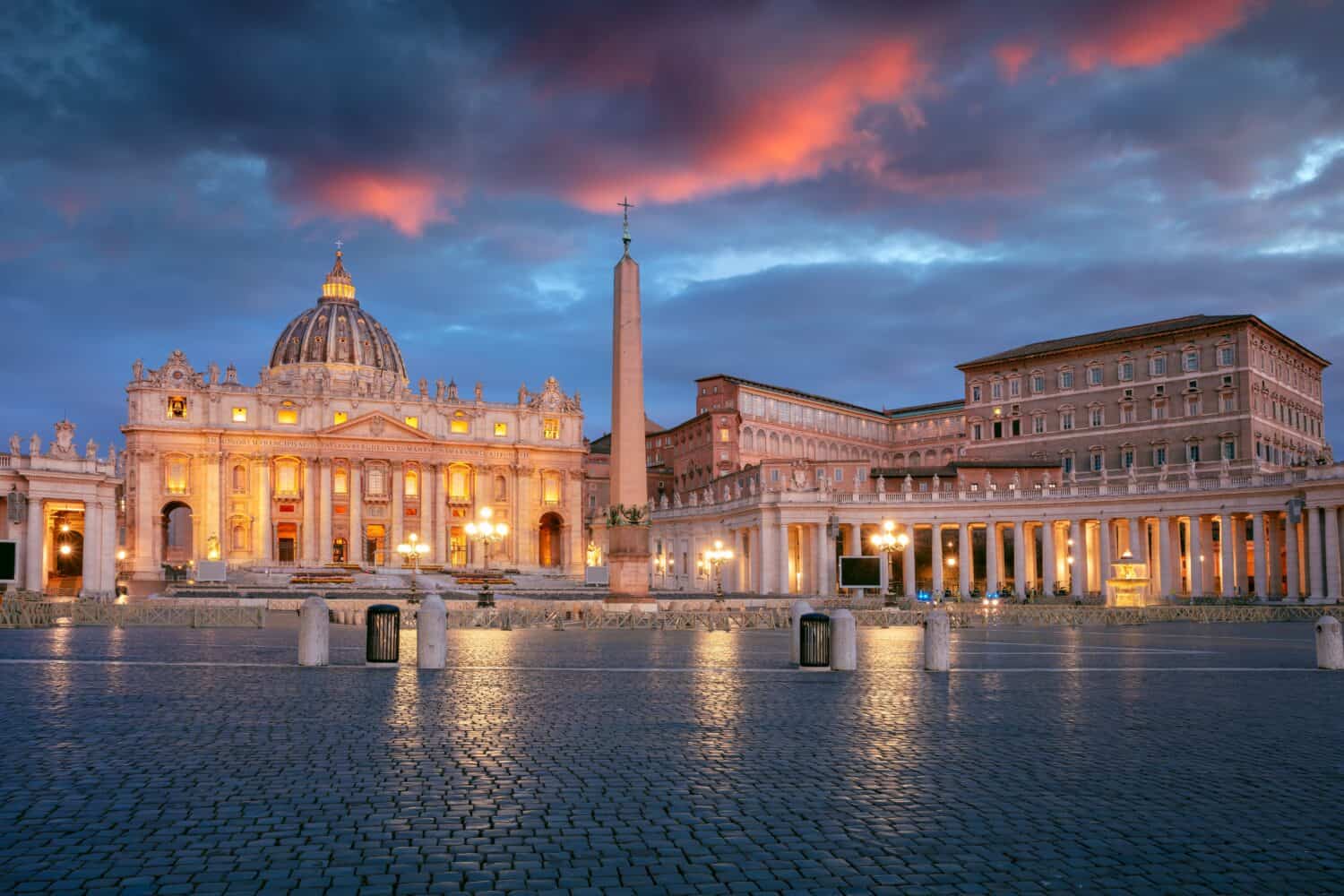
- Date: 3rd Century
Commissioned for Nero’s Domus Aurea (Golden House), this decadent bathtub (yes, a bathtub), is made entirely from an insanely rare and expensive purple marble called Imperial Porphyry. The only place to source this rare stone was a remote quarry in Roman Egypt, Mons Porphyrites. Traditionally, because this crystal containing igneous rock was so rare and expensive it was used as an accent stone in tiles and other artwork. This tub is the largest piece of intact Imperial Porphyry Marble ever found, weighing in at a hefty 1,000 lbs. Porphyry is the Greek word for “Purple.” It is worth approximately $2 Billion.
#3 The Vatican Codex
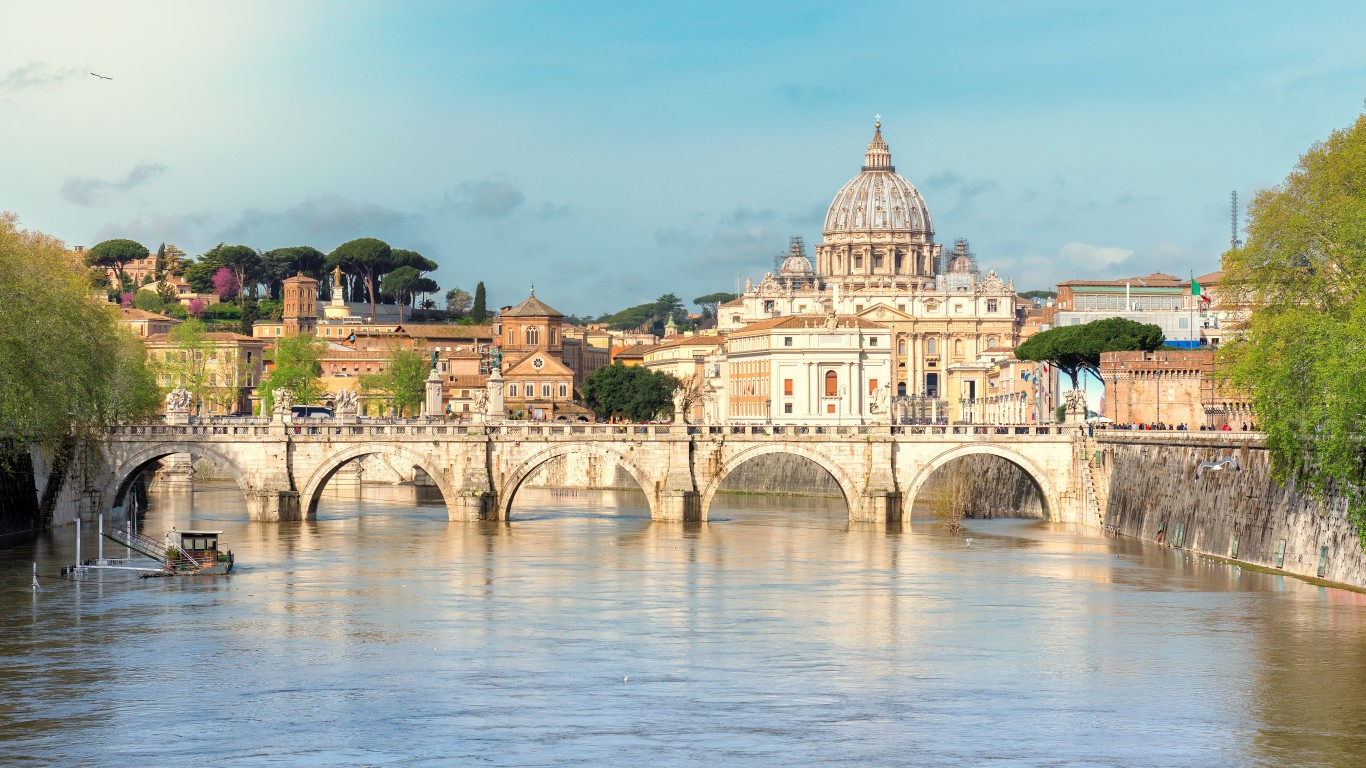
- Date: 4th Century
The Vatican Codex (Codex Vaticanus) is a manuscript of the Old and New Testament and is one of the four Great Uncial Codices. It is the oldest copy of the Bible in existence and is in original Greek. The material used is vellum and is 759 pages long. 71 leaves have been lost over time. There are no spaces between words, rare punctuation, and each leaf has three columns of writing per page.
#4 Papyrus 75

- Date: 175 CE–225 CE
Papyrus 75 is a single sheet of papyrus that contains the oldest known copy of the Lord’s Prayer, a fragment of the Gospel of Luke, and a fragment of the Gospel of John. It is the oldest and “most significant,” papyrus to be discovered and has been studied against the Codex Vaticanus to confirm its textual reliability.
#5 Henry VIII’s Love Letters
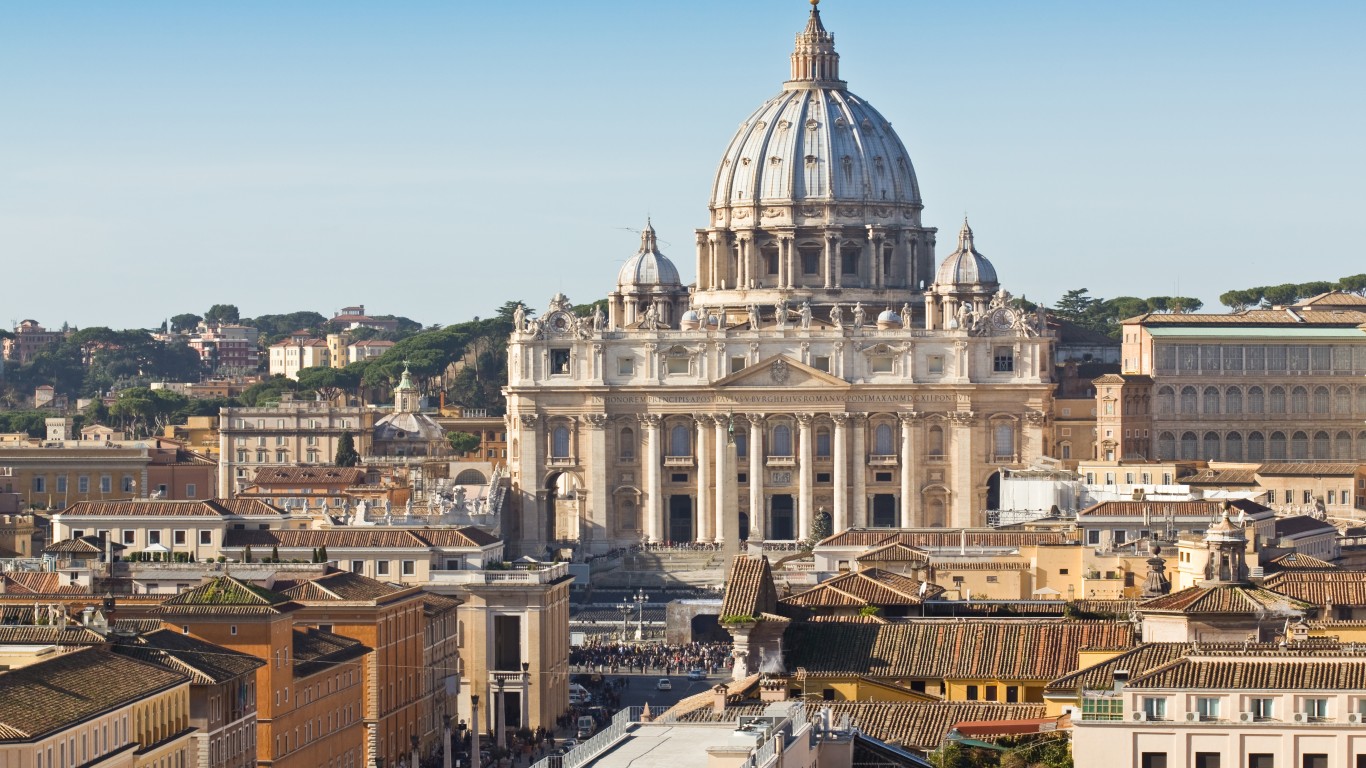
- Date: 1527-1528
A collection of 17 love letters to his second wife, Ann Bolyn, are kept in the Vatican. In a rare peek into the mind and romantic sentiments of Henry VIII, he uses a heart to sign his name, talks of kissing her “pretty dukkys,” and refers to Bolyn as his sweetheart. Whether they were stolen from Ann Boleyn or given freely to the Vatican, that information is lost to history, along with Ann Boleyn’s response letters. Earlier publications of these letters can cost as much as $800 today, so just imagine what the originals are worth!
#6 Bramante Staircase
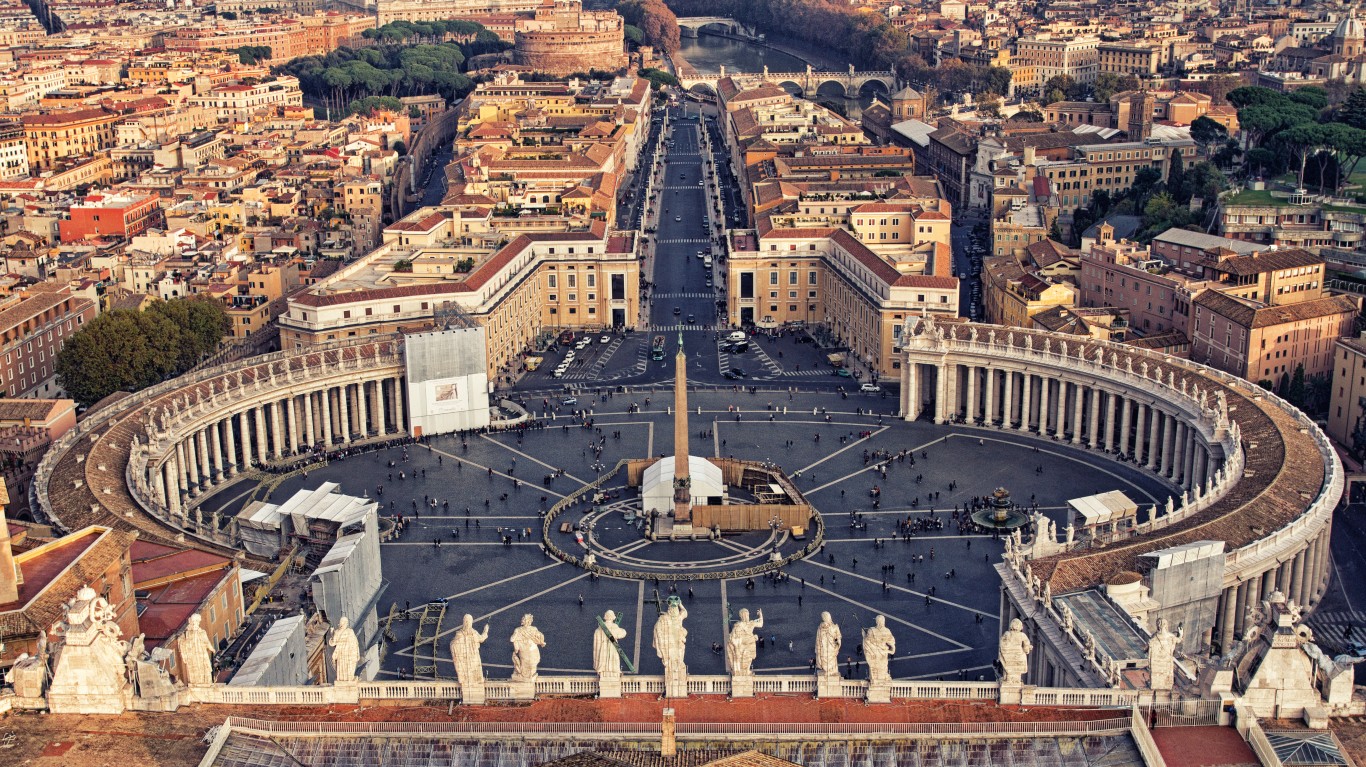
- Date: 1505
The Bramante Staircase was built in 1505 and connects the outside to the Belvedere Palace of Pope Innocent VIII. The double helix design allows climbers to simultaneously go up and down without interrupting the flow of traffic… or pack animals.
#7 Papal Letter of Martin Luther’s Excommunication
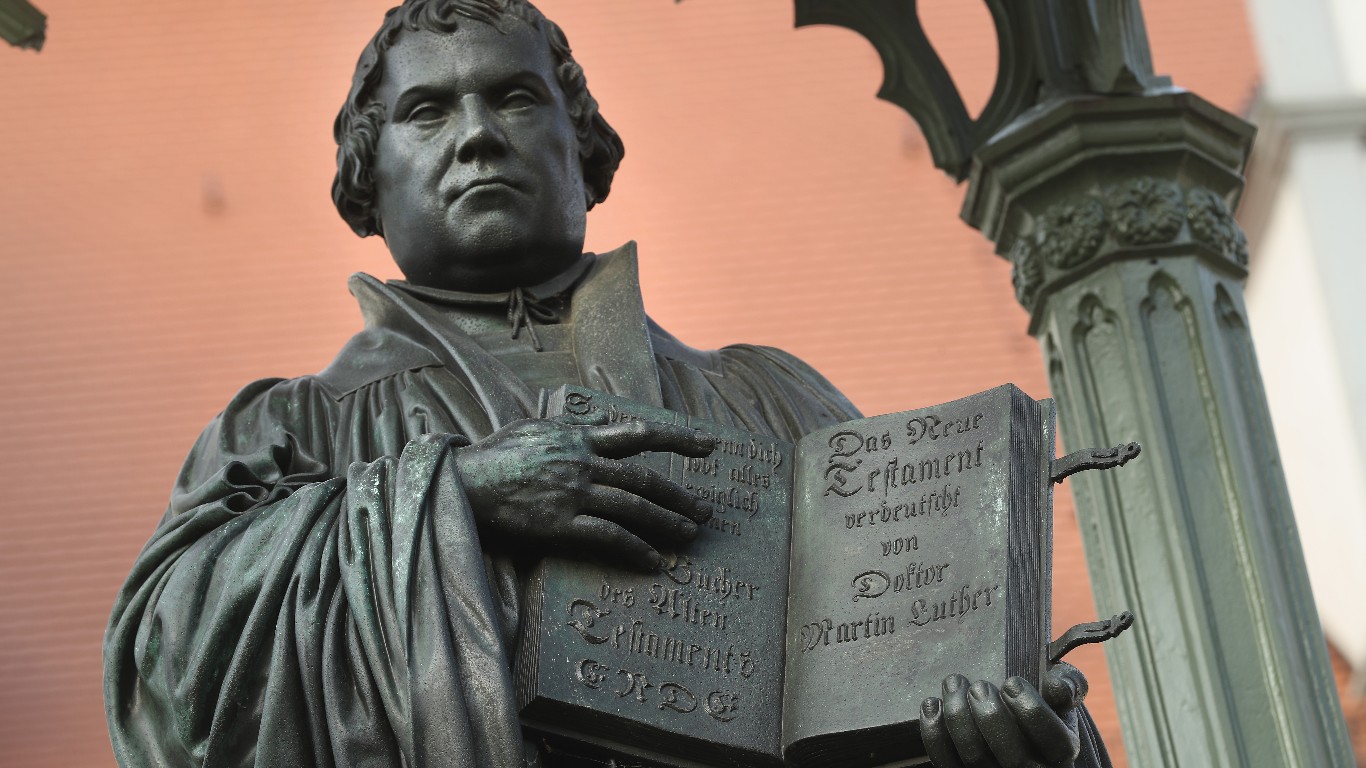
- Date: 1521
Martin Luther was excommunicated from the Catholic church in 1521 after he posted his 95 Theses at Wittenberg in 1517. The 4 year period between the posting and the official excommunication was spent in theological debate, a rejection of the Church’s authority, an examination, and an appearance at the Diet of Worms. At the Diet of Worms, Luther was charged with heresy after refusing to recant his criticism of the Church. Martin Luther’s copy of this excommunication letter was burned by him publicly.
#8 Illustrated Manuscript of Dante’s Divine Comedy
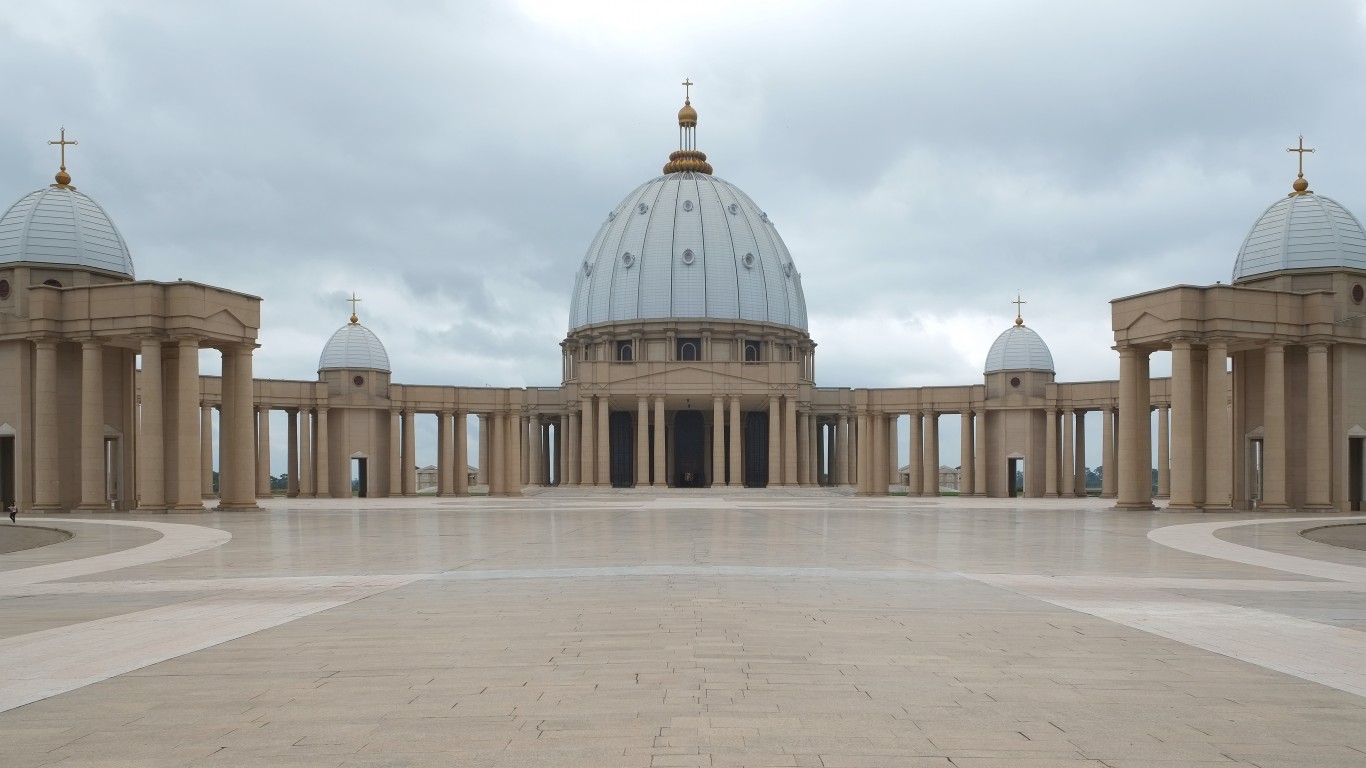
- Date: Approximately 1480s
Originally, Sandro Botticelli included 92 full-page illustrations in the manuscript. Only four of the 92 were fully colored, but most are silverpoint drawings. It was discovered in 1882 that the Vatican had purchased 6 drawings from the manuscript in 1689 from Queen Christina of Sweden. The rest of the manuscript is currently being held at the Museum of Prints and Drawings in Berlin (Kupferstichkabinett Berlin). The entire manuscript was displayed in an exhibition from 2000-2001 in Berlin, Rome, and London. The most valuable of the Vatican’s collections is The Map of Hell.
#9 Michelangelo’s Pietá
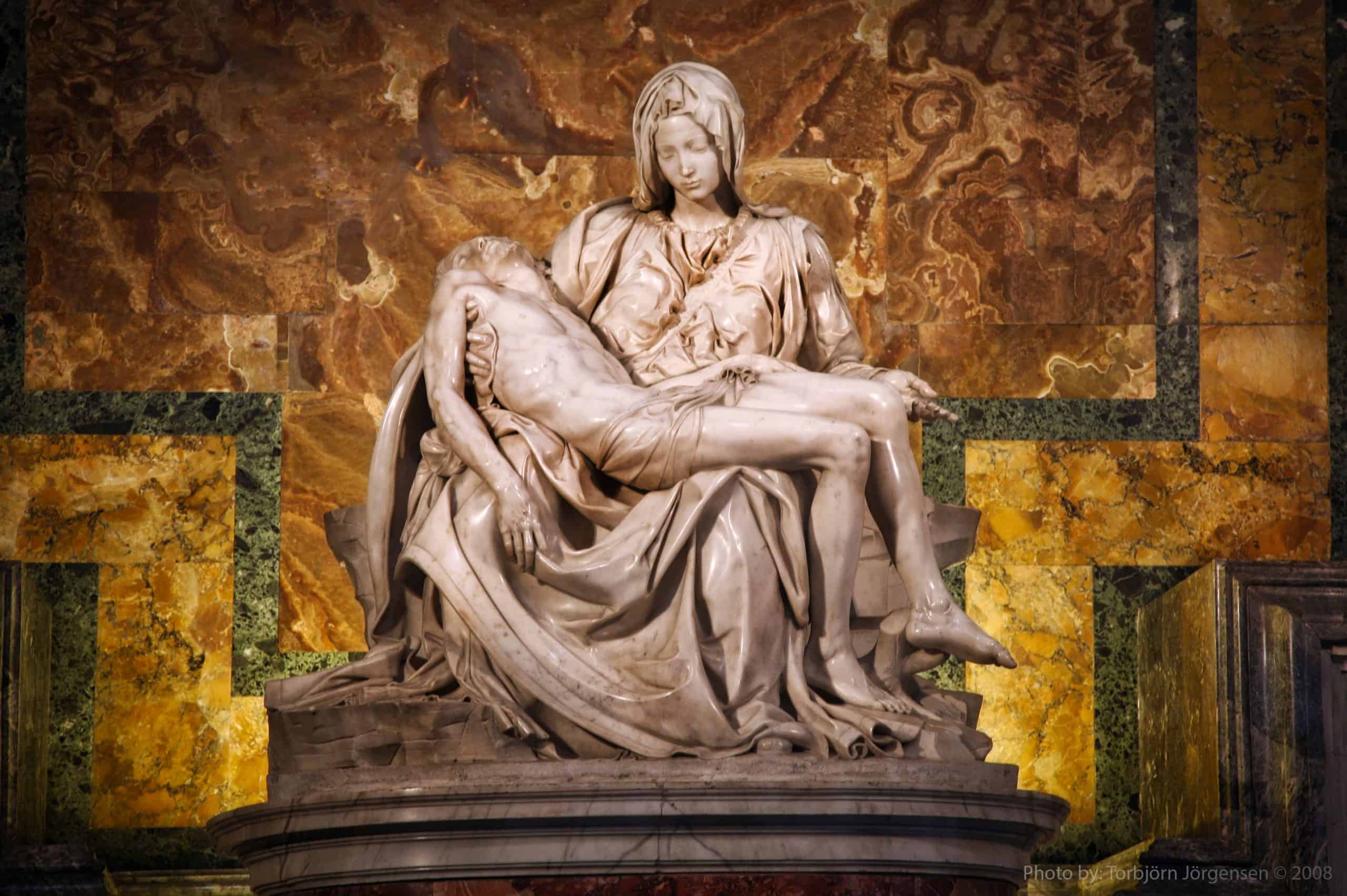
- Date: 1497
Cardinal Jean de Bilhères-Lagraulas, who was the French ambassador to the Holy See, commissioned La Pietá. Michelangelo created this famous statue of the Virgin Mary holding the recently crucified Jesus in her arms. With only a hammer and a chisel, he created this piece from a single slab of marble. At the time, he wasn’t well known, but his La Pieta catapulted him into fame that has lasted several centuries.
To claim his creation, he carved, “Michelangelo from Florence made this,” onto Mary’s sash. He wasn’t known to leave this kind of signature on any other of his works after this statue. It is known for its unbelievably soft appearance, despite only being made of hand-chiseled marble.
#10 Crux Vaticana
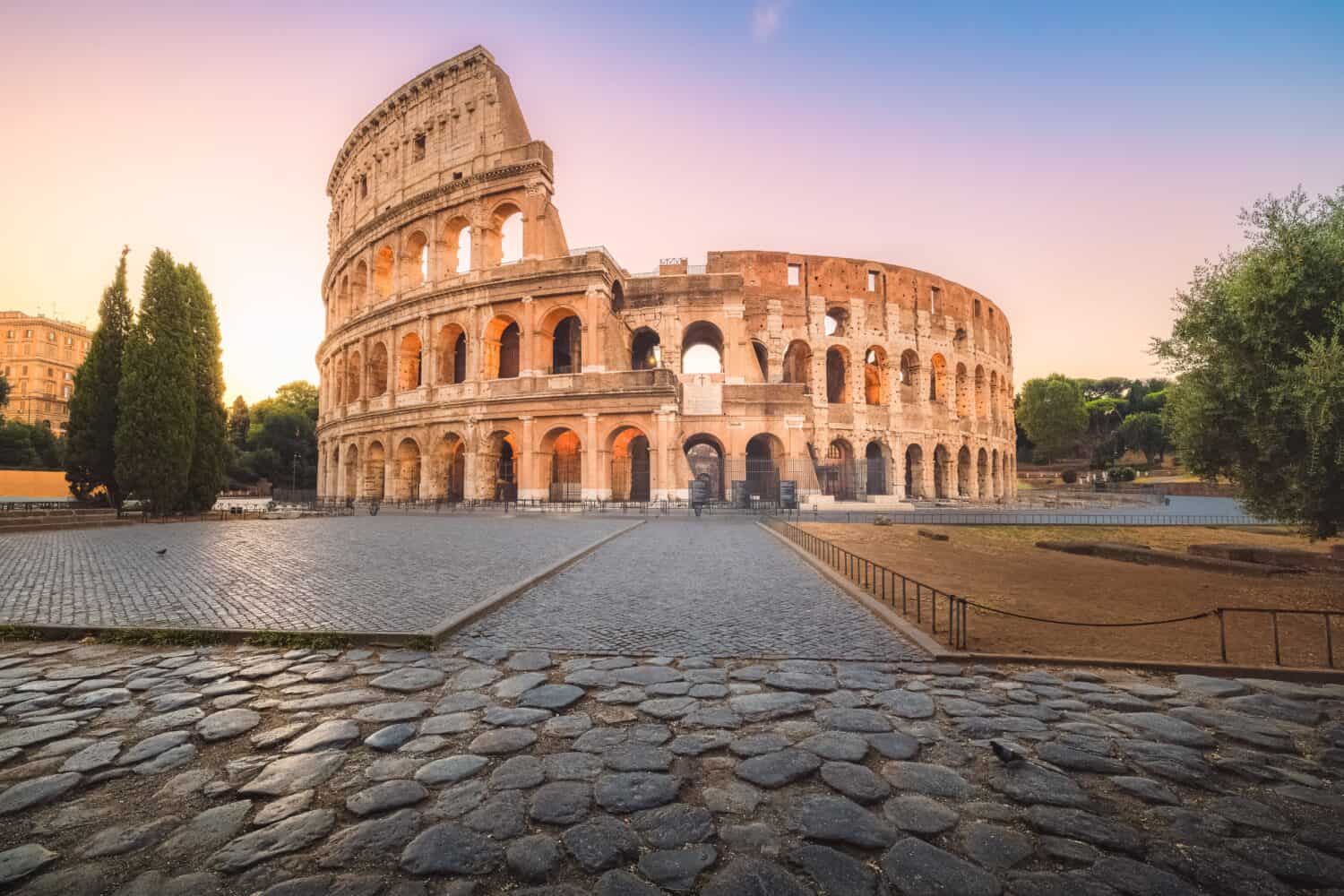
- Date: 6th Century
The Crux Vaticana (or the Cross of Justin II) is currently held in the Treasury of St. Peter’s Basilica within the Vatican. It supposedly contains a fragment of the True Cross, from the Byzantine Empire. Justin II and his wife Sophia gave this reliquary to Justin III, who was Pope from 561 to 574.
#11 Lacoön Group
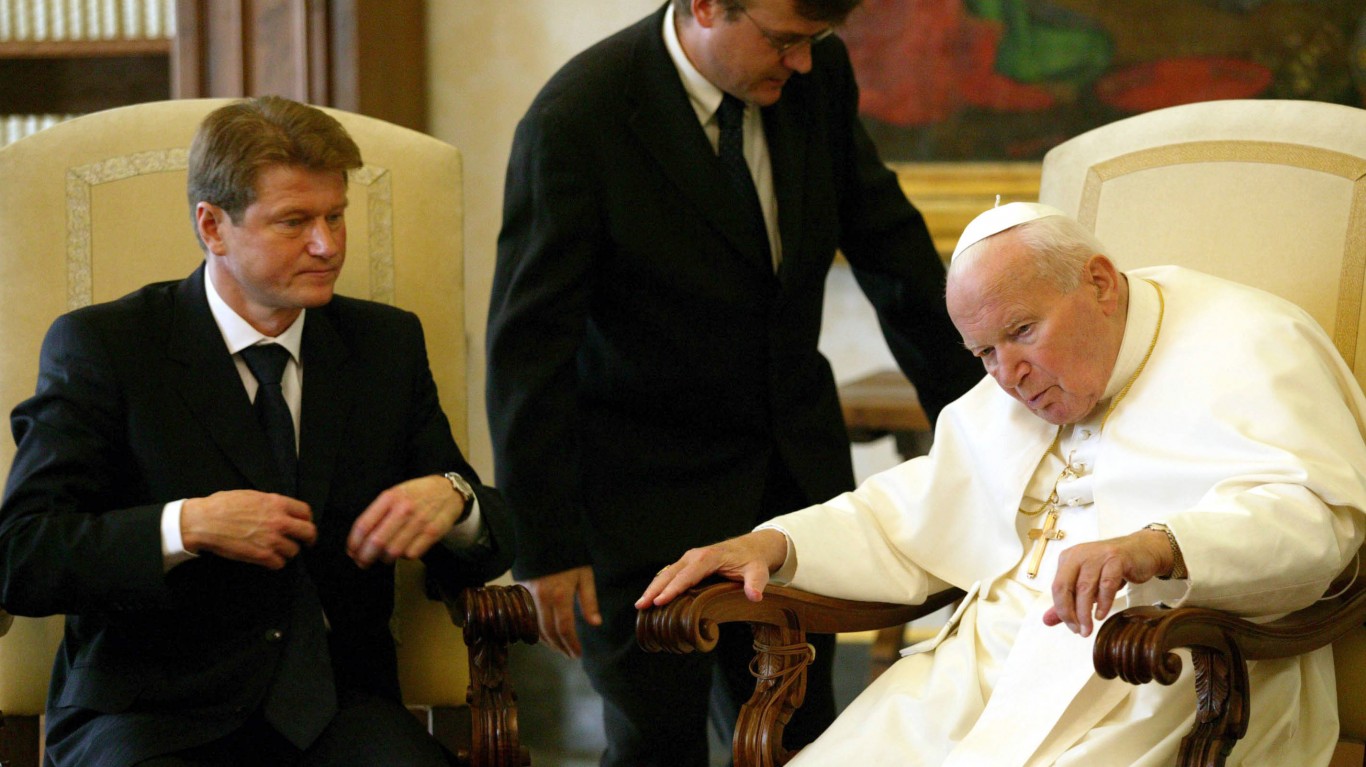
- Date: 200 BC-70s AD
The Lacoon Group, or The Statue of Laocoon and His Sons is called “the prototypical icon of human agony.” It depicts Laocoon, a Trojan priest, and his two sons, Antiphantes and Thymbraeus being attacked by sea serpents. The piece, according to Pliny, was created by three Greek Sculptors from Rhodes. They were Agesander, Athendodoros, and Polydorus. The statue was excavated and taken to the Vatican in 1506.
#12 Sarcophagus of Saint Helena
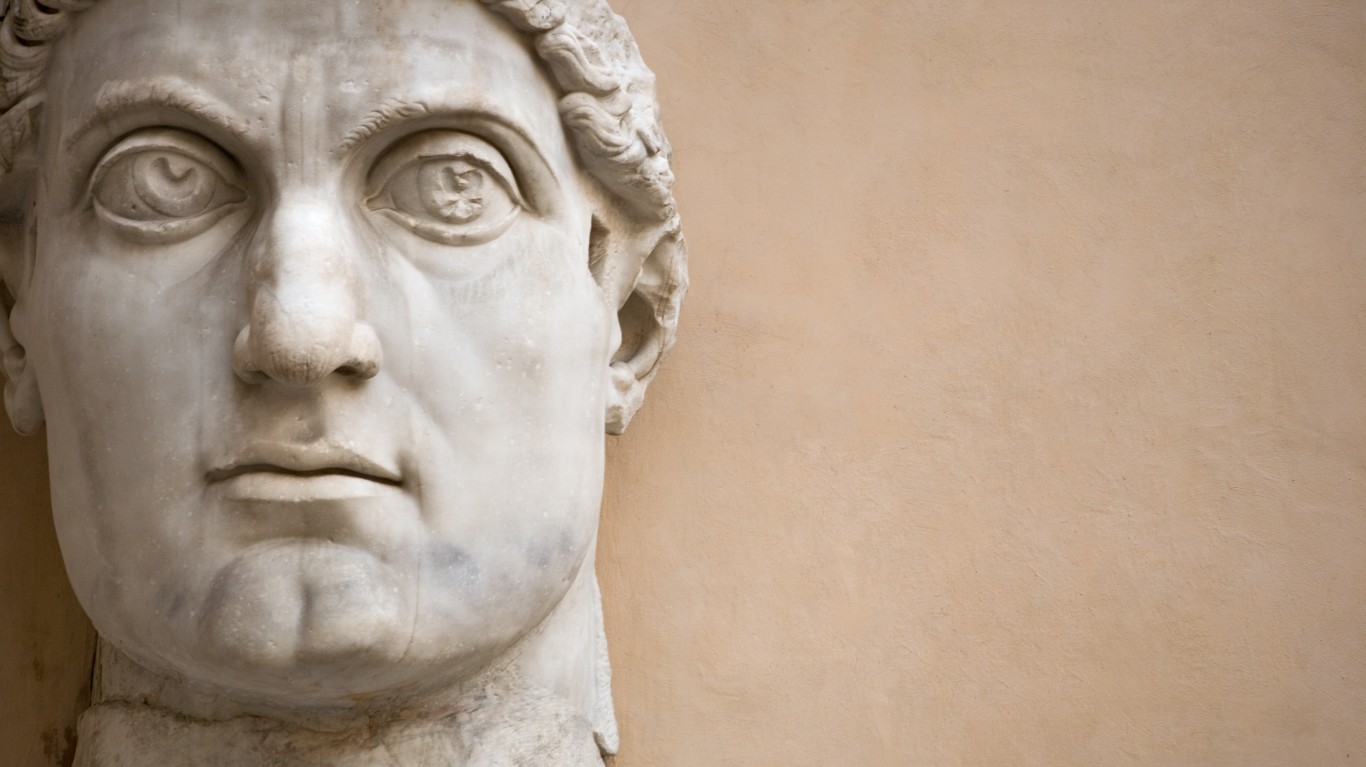
- Date: 335 AD
Helena, the mother of Emperor Constantine the Great, was entombed in 335 AD. In 1777, her sarcophagus was moved to the Vatican and restored by Giovanni Pierantoni and Gaspare Sibilla. She is known to have had great influence over Constantine, established the tomb of Jesus Christ, and led a pilgrimage to the Holy Land.
Uniquely, her sarcophagus is made from red porphyry, which was normally only used for the resting places of emperors. There is speculation as to why she would have this particular resting place. Some are led to believe that it was originally meant for her husband or son and she happened to die first, or perhaps she was just that well-respected as a leader of early Christianity. The exact explanation is lost to history.
It’s Your Money, Your Future—Own It (sponsor)
Retirement can be daunting, but it doesn’t need to be.
Imagine having an expert in your corner to help you with your financial goals. Someone to help you determine if you’re ahead, behind, or right on track. With SmartAsset, that’s not just a dream—it’s reality. This free tool connects you with pre-screened financial advisors who work in your best interests. It’s quick, it’s easy, so take the leap today and start planning smarter!
Don’t waste another minute; get started right here and help your retirement dreams become a retirement reality.
Thank you for reading! Have some feedback for us?
Contact the 24/7 Wall St. editorial team.

